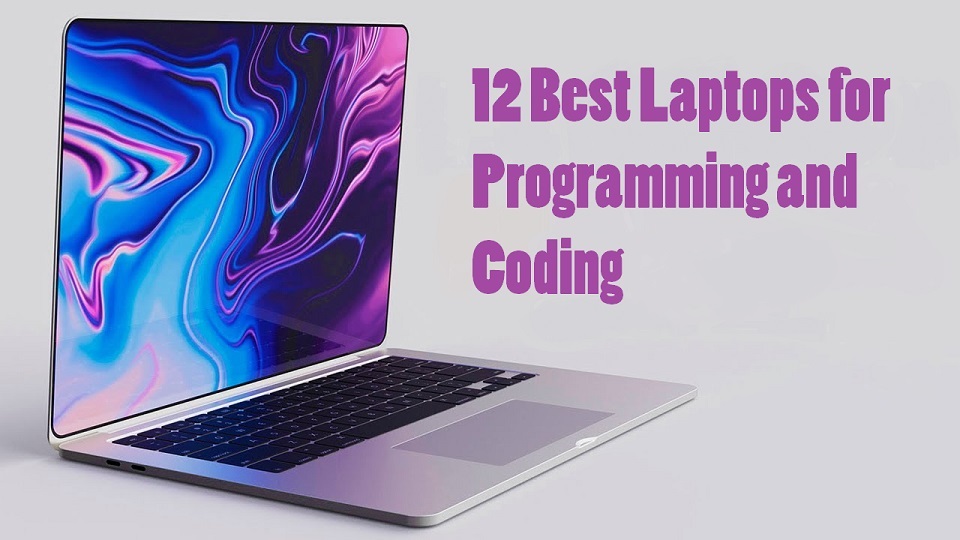
Whether you’re a professional developer or an aspiring coder, having the right laptop can make all the difference in your productivity.
With which, you can code from practically anywhere at any time, even at your favorite cafe — or on a plane!
However, As a programmer or developer, it becomes really confusing to pick the best laptop from thousands of laptops available in the market, especially for a person who is just starting programming.
Not every laptop fits every requirement. For developers, who are either programming or designing packages, the ideal laptop specification changes, depending on the field you are into.
For example, a game developer’s laptop, needs to be far more focused on graphical performance, than the one a web developer might need.
Are you a beginner programmer looking for a laptop that can keep up with your newfound passion? Luckily, you’re in the right place!
In this article, we put together an in-depth buying guide and a list of best laptop for Programming & Coding in 2024 to help you select the best one for your needs.
12 Best laptops for programming & Coding in 2024
If you want a new laptop for coding & programming, this list will provide some great ideas for what’s available today in terms of technology!
Are you ready? Understand and note down your requirements to choose the best product.
1. Apple Macbook Air
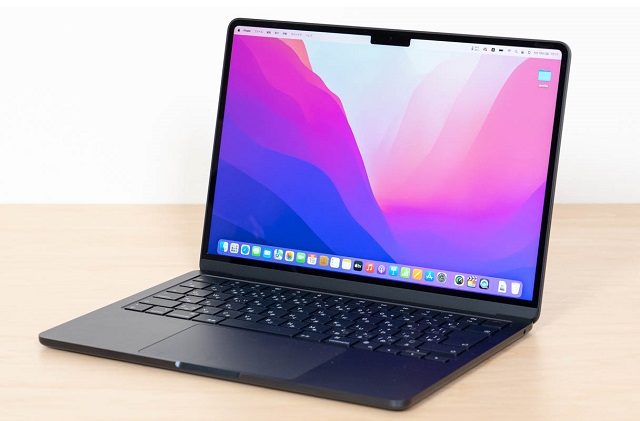
Featuring exceptional performance and macOS, Apple MacBook Air is the go-to choice for Apple-centric developers.
The design is extremely slim, sleek and modern, available in 4 beautiful color options: Midnight, Space Gray, Silver, and Starlight. It’s very lightweight and portable yet still powerful enough to handle most tasks.
The fast M2 Chip can easily handle general productivity tasks, like programming. There’s also a hefty 8GB of RAM and up to 512GB of storage.
In terms of Display, Apple wins with the 13.6-inch screen featuring 2560 x 1664 pixels. It’s a Retina display, and it displays very sharp images and text due to its high pixel density.
MacBook Air’s backlit keyboard has a full-height function row and Touch ID. The keys have adequate travel and are comfortably spaced. also there is a super smooth trackpad here.
Unfortunately, it only has two USB-C ports, and its M2 SoC only supports one external display.
The MacBook Air have no cooling fans, Thus, if you know you’ll be using your laptop for heavy tasks, you may want the macbook Pro for its fans.
With a powerful battery that lasts up to 18 hours, The battery life is excellent, so you don’t have to worry about getting sidetracked by a power outage.
We recommend this Macbook Air M2 to beginner programming users who want an ultraportable with fantastic battery life.
2. Apple Macbook Pro 16
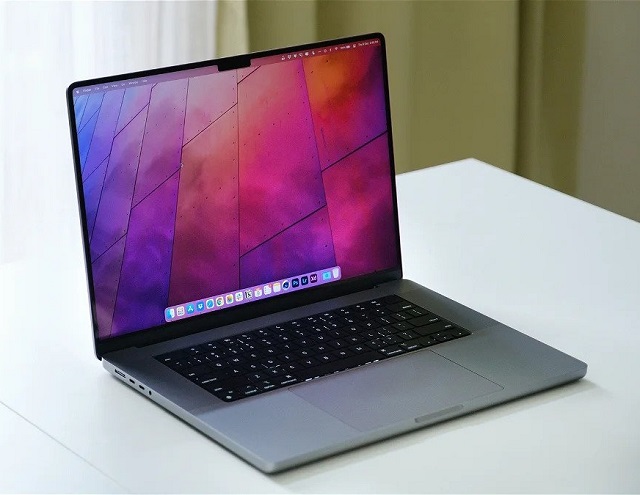
Experience top-tier performance and a sleek design with this powerful programming powerhouse – Apple Mackboo Pro 16, great for professional developers..
Mackboo Pro 16 comes up with a 16.2-inch diagonal display with 3456 x 2234 resolution, 99% DCI-P3 color space, 1600 nits of peak brightness, 120Hz refresh rate and more, All are top notch.
Its stunning liquid retina XDR display provides all the programmers and developers out there surreal experience and the absolute joy of programming.
Mackboo Pro 16 is offered in 2 variants: the M2 Pro chip (12 CPU cores, 19 GPU cores) and the M2 Max chip (12 CPU cores, 38 GPU cores). Both are fast and allows you to do heavy tasks such as ML flawlessly.
The backlit keyboard is firm with springy feedback and gloriously quiet which definitely comes in handy in an office or coffee shop.
One of the best thing about this device is its long-lasting battery life that you could go two work days, or even a few long haul flights, on a single charge.
It’s pricey, but the Macbook pro delivers exceptional performance that can fit a wide variety of needs.
A 14-inch Macbook Pro is the perfect size for you when you find 16-inch too large, which is more portable for traveling.
3. Dell XPS 15
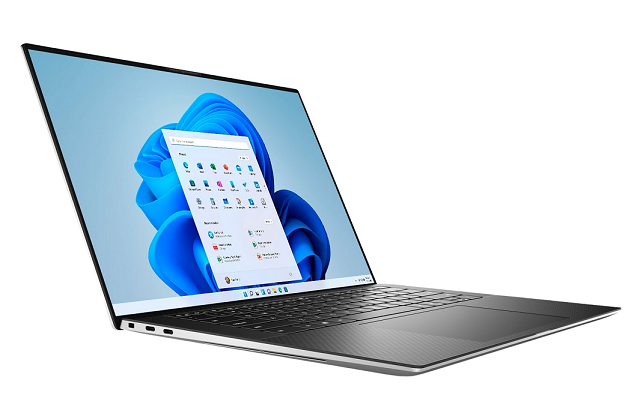
The Dell XPS 15 9520 is a great laptop for programming. It has a high-resolution OLED display, an excellent keyboard, and powerful processing capabilities.
Powered by the 12th generation Intel Core i9-12900HK processor, this Dell XPS 15 has a 32GB of RAM, 1TB SSD Storage, and a discrete Nvidia Geforce RTX 3050 Ti GPU.
The XPS 15 laptop’s processing capabilities are powerful enough to handle complex tasks. which elevates your productivity, creativity, and programming to a whole new level.
The 15.6-inch 4K touchscreen offers everything you expect from OLED panel, including deep, rich blacks, extra-sharp detail, and vibrant color. which is a dream to view.
Dell XPS 15 is exceptionally thin and light for its size. The keyboard feels comfortable and responsive, the trackpad is luxuriously smooth and large.
For connectivity, there’s 3 Thunderbolt 4/USB-C ports, a headphone jack, and a microSD card reader.
As far as battery life goes, it lasts about 6 to 9 hours, and that’s no surprise for a laptop like this one with Powerful processor and high-resolution screen.
Combining performance and a stunning display, this XPS 15 laptop is perfect for Windows-based development.
4. Lenovo thinkpad X1 Carbon
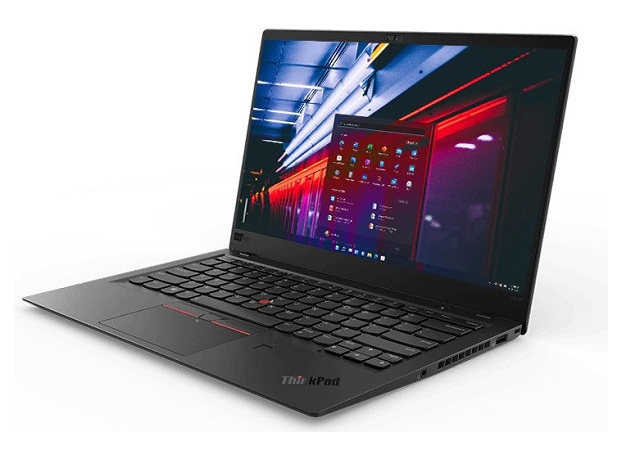
Many programmers are fans of the Thinkpad lineup. They’re fast, quiet, run cool, robust, reliable, and last a long time.
Lenovo ThinkPad X1 Carbon is a business-focused laptop that has a thin, lightweight, and durable design. It is also known for its long battery life ( last over 14 hours on a single charge) and security features.
ThinkPad X1 Carbon comes with a 11th generation Intel Core i7-1165G7 processor and an Integrated Intel Iris Xe Graphics, making it powerful enough to handle all kinds of software development projects.
It also features 16GB of RAM and 512GB SSD storage space that you can run multiple programs at once without having to worry about slowing down your machine or running out of space on your hard drive.
The 14-inch IPS display delivered a good picture with vivid colors, high contrast, and sharp details. It’s a 16:10 panel with 1920 x 1200 pixels resolution and matte finishing.
Thinkpad X1 Carbon is equipped with a spill resistant Backlit keyboard, The keys feel snappy and are quiet when mashed and offer just the right amount of travel.
The X1 Carbon has more than enough ports (2 USB-C ports, 2 USB-A ports and a full-size HDMI output) and expansion capabilities to keep the average user happy.
With its reliable performance and durable build, this ThinkPad X1 Carbon laptop is perfect for on-the-go programming professionals.
5. Asus VivoBook 15
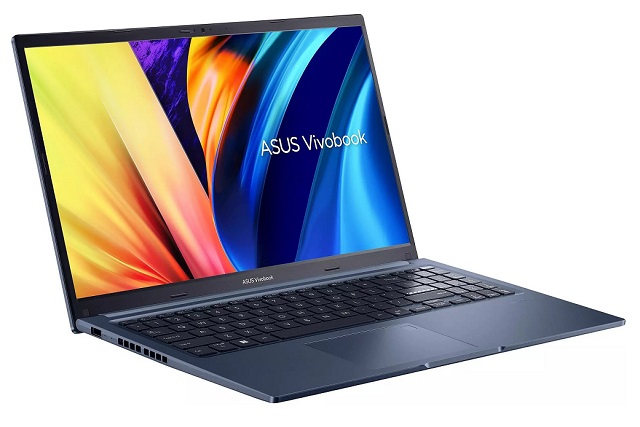
Asus VivoBook 15 is a slim and lightweight laptop with a modern and chic look. It is made entirely out of plastic, but the chassis structure is supported by an aluminum frame.
The 15.6-inch screen has a nano edge-bezel and an 88% screen-to-body ratio. which is also decently sharp and provides enough space for light multitasking.
The IPS display comes with a resolution of FHD (1920 x 1080), comfortable viewing angles, and a non-flickering backlight, but only 65% sRGB color coverage.
With hexa-core AMD Ryzen 5 4600H processor, AMD Radeon GPU, 8GB memory, and 256GB SSD, this laptop delivers fast and efficient performance.
VivoBook 15 packs all your essential ports including three USB-A ports, a USB-C, an HDMI, and an SD card reader.
The keyboard sports a NumberPad but sadly lacks a backlight. There is ample space between the keys making it comfortable to type.
Another letdown was the battery life, VivoBook 15 has a 2-Cell 37 Wh Li-Ion battery that can barely manage six hours of continuous use.
The laptop also features an easy-to-use fingerprint sensor for added security, and the blue finish adds a touch of personality to this versatile device.
Considering the price, the Asus VivoBook 15 is an excellent budget choice, whether you are a web developer, or an app programmer.
6. HP Pavilion 15
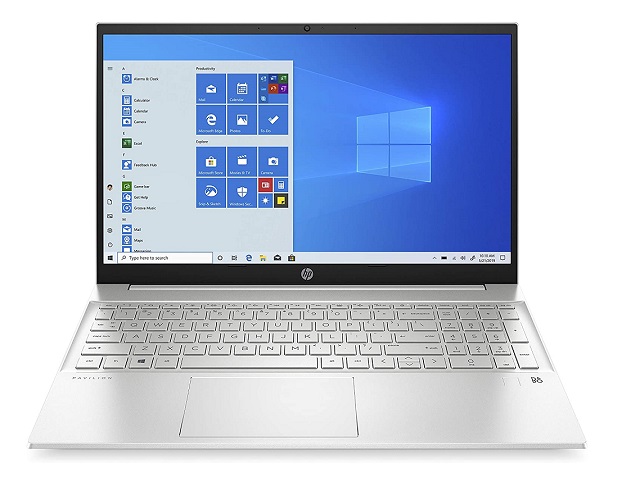
HP Pavilion 15 is a stylish laptop with solid processing power at a reasonable price. You will get many benefits from your recent programming work by purchasing it.
It features a 15.6-inch IPS display with Full HD 1080p resolution, 100% sRGB wide color gamut coverage and 250 nits brightness.
With an Intel Core i7-1255U processor, Intel Iris Xe Graphics, 16GB of RAM and 512GB SSD storage, HP Pavilion 15 can handle multitasking and demanding apps with ease.
Pavilion 15 is wonderfully designed with Micro-Edge Screen, The body is made of a strong plastic. The full-sized keyboard is comfortable to use, long lasting and durable.
The laptop has lot of port selection: two USB-A ports, a USB-C Port, one HDMI port, a SD card slot port, and a headphone jack.
The laptop’s 3-cell 41 Wh Li-ion battery provides up to 7 hours of battery life, which is impressive for a mid-range laptop.
Offering great value and versatility, HP Pavilion 15 laptop is ideal for students mastering their coding skills.
7. Acer Aspire 5
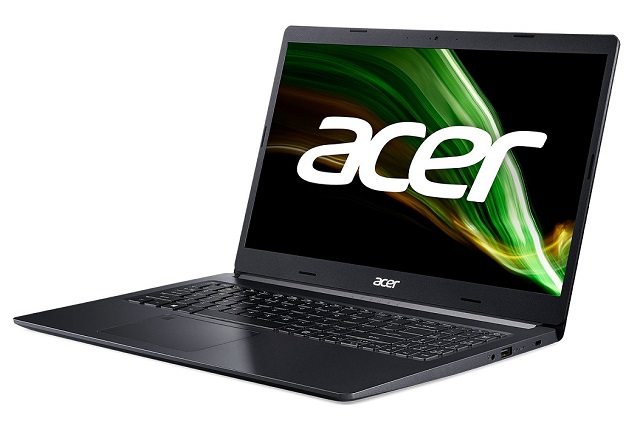
If budget is your absolute priority, then you can’t beat the Acer Aspire 5 (A515-45-R74Z). For under $500, you get a really fast, extremely lightweight, and ultra portable laptop.
With a Hexa-Core AMD Ryzen 5 5500U processor, Integrated AMD Radeon card, 8GB of RAM, and 256GB of SSD Storage, you can expect a smooth experience across the board.
The Aspire 5 is also designed with future upgrades in mind, If you find you need a bigger SSD or more RAM later, it’s fairly easy to pop in upgraded components.
The device comes with a 15.6-inch FHD IPS display allowing you to easily spot errors in your code. but the display has a limited color gamut of 64% sRGB, which saps vibrancy from the display.
It has a backlit keyboard that feels comfortable to type on. Its touchpad is spacious and responsive, providing accurate navigation around Windows 11 without any hiccups or significant gestures.
In terms of battery life, the Aspire 5 laptop can work up to about 7.5 hours after each charge. And it allows you to meet the maximum desired use for your work.
For coding and other programming tasks, Acer Aspire 5 is an excellent option for students studying IT and beginners in programming.
8. Lenovo IdeaPad 3 15
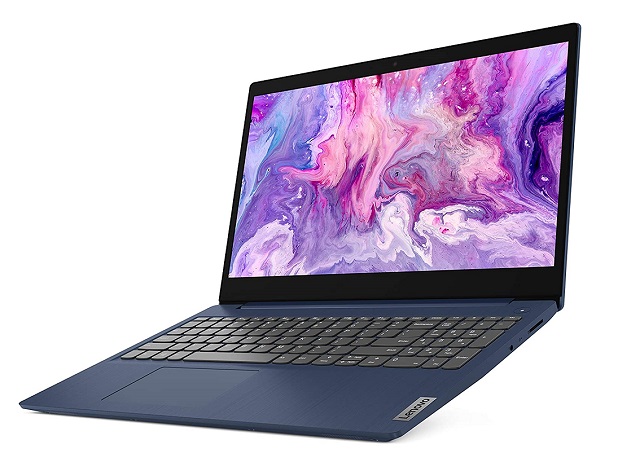
The IdeaPad 3 15 is another solid entry from Lenovo that should be a good option for anyone looking to start their programming journey.
IdeaPad is a line of consumer-oriented laptops from Lenovo. What really sets the Ideapad 3 apart from its competitors is the combination of price and performance.
The screen is 15.6 inch, which makes it pretty comfortable for regular usage. It has a 1366 x 768 pixel HD resolution and only 62% sRGB color gamut, which is not perfect, but still serviceable nonetheless.
Tech specs is good enough to handle most programming needs because it comes with an Intel Core i3-1115G4 processor, Integrated Intel UHD Graphics, 8GB RAM and 256GB of SSD storage.
Another pro to the Ideapad 3 is that it’s loaded up with ports: 3 USB-A ports, a Combination Audio Jack, a Multi-format SD Media Card Reader, and one HDMI port.
The 15.6″ Ideapad 3 is accompanied by a full-width keyboard, one that includes a dedicated numeric keypad for spreadsheets and the like. the key presses feel soft but substantial, the keys are well spaced.
This laptop feels well-built, it’s easy to carry around thanks to its thin and light design, and its battery lasts easily through a typical school day.
If you’re a programmer on a budget, then the Lenovo IdeaPad 3 is an excellent choice.
9. Dell Inspiron 15
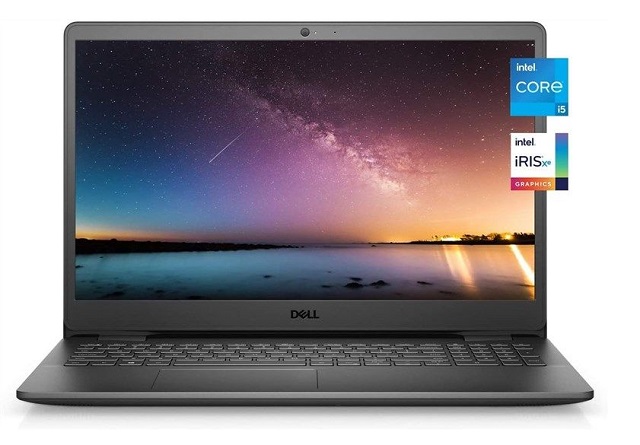
Dell Inspiron 15 3501 is a good option in the budget segment for coding and programming.
It’s well built, has a modern, neat design with a weight that is easy enough for your on-the-go activities.
The 11th gen Core i5-1135G7 processor, Integrated Intel Iris Xe Graphics with 16GB of RAM will ensure that your projects run smoothly without any issues.
Additionally, The 256GB SSD + 1TB HDD will store all your programs, files, and photos comfortably.
It is equipped with an 15.6-inch IPS screen, FHD 1080p resolution and an anti-glare coating, allowing users to easily observe the work for a long time without worrying about affecting their vision.
But you’ll have to live with a handful of cut corners, the screen covers only 66% sRGB color gamut, which is too narrow to use for any sort of graphic design work.
The battery life might not be that great, Streaming 1080p content with the screen at full brightness will drain the battery in about six hours.
10. LG Gram 17
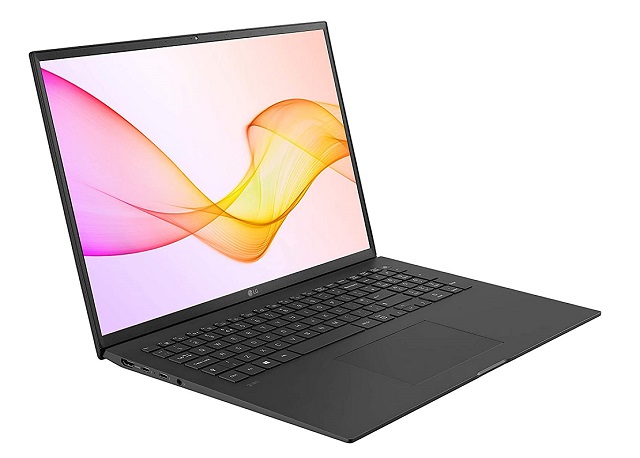
The LG Gram 17 is a powerful and versatile laptop that combines performance, convenience, and style for programming.
The 17-inch IPS Micro-Edge display comes with 2560 x 1600 pixels resolution and 99% DCI-P3 wide color gamut, which provides clear and vivid visuals.
The large device is powered by the 12th gen Intel Core i7-1260P processor and features 4GB Nvidia RTX2050 dedicated graphics, capable of game development.
The 16GB DDR4 SDRAM helps to make sure that you can work on multiple projects at once without slowing down your computer or having to constantly reload programs as they run out of memory space.
It also comes with a 1TB HDD which means you don’t have to worry about running out of disk space until years from now!
The LG gram 17 has a lot of ports, it has two USB-C ports, two USB Type-A ports, HDMI, a 3.5mm headphone jack, a microSD card reader, and the Kensington lock port.
There’s also a built-in fingerprint reader for extra biometric security. The battery life of the laptop is up to 17 hours, but that can vary a lot depending on what you use this laptop for.
11. HP Chromebook x360 14c
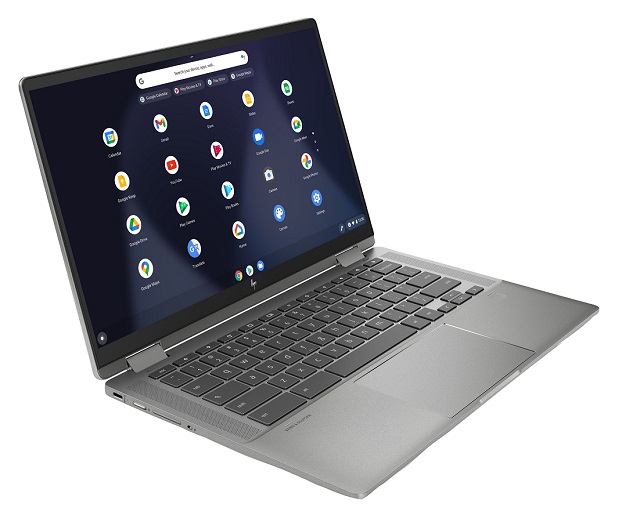
If you do not wish to spend a lot and are looking for high durability on a laptop for coding, then the HP Chromebook x360 14c will be the best choice for you.
The best thing about this laptop is that it has an Intel Core i3-1115G4 processor which is good enough for working with various programming languages like C, C++, HTML+ CSS, and frameworks like ASP.Net.
The 8GB RAM gives you plenty of space for running multiple programs at once without slowing down your system.
It also comes with 128 GB SSD storage so that you can store all of your projects on it without having to worry about limited storage space.
The 14″ Anti-glare IPS Touchscreen with FHD 1080p resolution and 63.7% sRGB colos accuracy offers decent viewing experience possible while working on coding projects.
The Chromebook x360 14c’s keyboard is excellent — it’s springy and responsive, but at the same time, it’s quiet so you won’t disturb anyone nearby with obnoxiously loud clicking.
This device can support working up to nearly 8 hours to meet your working requirements fully. Thus, the maintenance of work progress will be more secure.
12. Acer Nitro 5
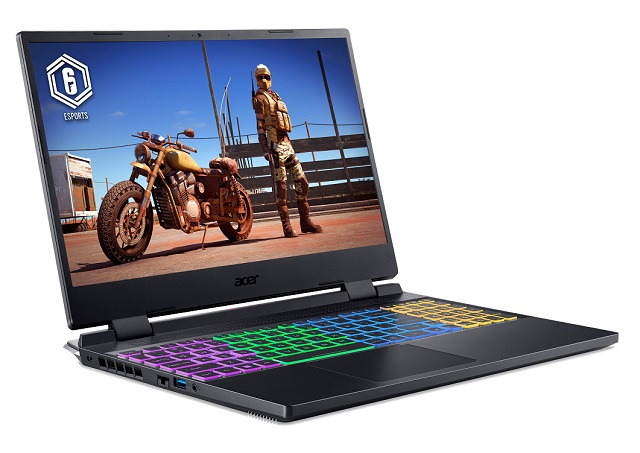
The Acer Nitro 5 is an affordable gaming laptop offering everything you need for programming, including game development.
It features an impressive 15.6-inch IPS display with FHD 1080p resolution, and 144Hz refresh rate that delivers smooth visuals and performance.
The Nitro 5’s biggest disappointment, is its 64% of the sRGB color gamut and 300 nits of peak brightness, color and brightness performance is only average.
With a 12th Gen Intel Core i5-12500H processor and 12 cores, Nitro 5 provides fast and smooth performance for even the most demanding games and applications.
The 16GB RAM and 512GB SSD Storage provide ample storage and quick boot-up times, while the Nvdia RTX 3050 Ti graphics card provides stunning visuals and fast frame rates.
It comes with a great selection of ports, include one HDMI 2.0, a USB-C port, a headphone jack, Ethernet, and 3 USB-A ports.
It gives you a solid 4 to 5 hour battery backup by 59Wh battery capacity. It also has an RGB backlit keyboard which can help you while you work in a dark environment.
Nitro 5 is well-equipped with cooling power, featuring Acer CoolBoost Technology with dual fans along with exhaust ports.
Aside from the bulky size and mediocre screen, The Acer Nitro 5 is absolutely worth buying. There are very few gaming laptops that offer as much value for your money.
How to choose the best laptop for programming & coding?
When choosing a laptop for programming, it’s important to consider the specs that will make the most sense for your specific needs.
You don’t always need the most powerful laptop for programming. You just need something modern and reliable that can compile, run, and test all your code and projects.
But of course, You will want something fast because compiling and running code shouldn’t eat up all your time.
Operating System
Choosing the right operating system is essential as some tools are OS specific. Windows, Mac and ChromeOS are the most common, but you can also install Linux.
As a programmer, you’ll need to select the best operating system for your needs. Choose one that is compatible with most, if not all, of the tools you need to use for your coding projects. You probably also want to select the OS best suited for your intended projects.
Windows is the most widely used operating system, so it has the largest selection of software and applications. It’s worth mentioning that most developers who want to work on video games will most likely prefer a Windows machine.
MacOS has a more user-friendly interface. However, it only works with Apple computers. If you do any mobile development thats targets Apple phones/tablets you need a Mac anyway.
Linux is free to use and is compatible with a wide range of computer hardware. However, it has a learning curve and may not have as many applications as Windows or macOS.
Although, Chrome OS uses the Linux kernel as its base it is no where close to being as complete an OS as a proper Linux Distro like Ubuntu or even Windows for that matter.
Chromebooks are designed for web browsing and using apps, not for running heavy duty programming tools. They also tend to have lower end specs, with very small hard drives and slower processor.
You can do programming on chrome os but basically just in crostini (the linux container system).
Processor
The processor is the brain of your laptop and one of the most important factors to consider when choosing a laptop for programming.
If your work requires running multiple applications at once, you should prioritise core counts on the processor chip.
If you’re more likely to be spending most of your time on one specific application, make sure you aim to get a processor with a high clock speed. for example, PLC software for the most part will only use 1 core for processing and compiling.
A fast CPU will easily manage all of your large compilation projects. Furthermore, it will allow you to multitask and effortlessly transition between programmers.
For handling massive projects, and for graphically intensive applications. we recommend at least an Intel Core i5 or the AMD equivalent, the Ryzen 5.
On the other hand, if you’re working with web designing tools, you don’t necessarily need a high-end processor. A laptop with an Intel Core i3 or an AMD Ryzen 3 processor will do just fine.
If you want to use an Apple MacBook as a laptop for coding, M1 and M2 chips offer more than enough processing power, even at the base model.
RAM
RAM is short for Random Access Memory, which allows your computer to store data temporarily so that it can be accessed quickly.
Thus, the more RAM you have, the better your machine will be at multitasking and the faster it can compile and run your code.
It really sucks working on a low memory machine, because everything works really slow.
For web developers, RAM might not be as major concern, since there is little compiling or heavy development tools to work on. A laptop with 8GB of RAM should suffice.
However, application or software developers who need to run virtual machines, emulators and IDEs to compile massive projects will need more RAM. A laptop with at least 12GB of RAM is ideal.
The requirement goes even higher for game developers. Game development environments, level design need powerful systems to run. We recommend finding laptops with 16GB of RAM or even 32GB of RAM.
Storage
Storage is where you keep all of your files, programs, and data.
When choosing a laptop for programming, you should look for a laptop with a large amount of storage space so that you can keep all of your files and data on hand.
SSD (Solid State Drive) and HDD (Hard Disk Drive) are two storage types that laptops have. SSD gives faster performance but costlier than HDD.
Thankfully, almost all laptops today come with SSDs by default. which will make your computer feel more responsive.
If you must choose between an SSD and a HDD, you should choose a faster SSD drive to store your operating system, programs, and current work. The slower HDD can then be used to store your archived and other stuff.
Graphics Card
Your graphics processor, also known as the GPU (graphics processing unit) or video card, is responsible for the image your laptop’s screen displays.
Programmers won’t always need a discrete graphics card. Integrated GPUs like Intel UHD graphics, Intel Iris Xe graphics, or AMD Radeon graphics are enough for general coding.
If you intend to work on developing video games, you’ll almost certainly need a discrete GPU. Discrete video cards are separate components, the most popular ones being the NVIDIA GeForce RTX cards.
Macs running Apple Silicon do not have or need discrete GPUs, as the M1 and M2 chips already come with powerful GPU cores.
Screen Size and Resolution
Programming involves spending large amounts of time in front of your laptop. The quality of the screen is important, as is as little strain on the eyes as possible.
Laptops come in a few standard sizes, the most common being 13”, 14”, 15”, and 17”. The smaller the screen, the more portable your machine will be. On the other hand, the larger your screen, the more you can fit into it.
If you value portability, choose a laptop with an 13-14 inch screen, but we wouldn’t recommend less than 13”.
If portability is not the main problem then you can go for the largest monitor you can afford. Because you have less space to work with on smaller screens, Text, icons, and other user interface components will appear smaller as a result, causing increased eyestrain.
In addition, A laptop with a higher resolution will be better for programming as it will allow you to see more code on the screen at one time. For that reason, we recommend getting a laptop with at least Full HD 1080P.
Keyboard
Programmers need to spend endless hours in front of the laptop, coding. So a lot of emphasis must go to the keyboard of laptop, which need to be comfortable.
Possibly, opt for one that comes with a numerical pad. Consider the ones that have a decent travel and a soft touch. The quality and sturdiness of the keys is important, because you’re going to be using it for a long time.
Look at the keyboard layout as well. Some laptops may have keyboards with odd layouts, where the Fn keys and Ctrl keys may be repositioned, or some keys such as the Enter or Backspace keys are smaller. This can take some time getting used to.
Having a backlit keyboard can also help if you’re working at night or in low-light.
Battery Life
A laptop with a long battery life will allow you to work for extended periods of time without having to worry about recharging.
If you are frequently on the go, a laptop with a long battery life will also be more convenient as you will not have to carry around a charger.
Conclusion
Choosing the best laptop for programming & coding isn’t as complicated as you may think, so there’s no need to feel overwhelmed.
As long as you’re taking your specific needs into consideration and looking for a suitable laptop that fits into your budget, you’re all set for success.
We’ve taken into account all of the factors that matter when choosing a laptop for coding or programming: price, performance, portability, and more.
We hope our guide has helped you narrow your search and choose the perfect device for your needs.
With the right tools and knowledge, you will be well on your way to becoming a programming pro in no time at all.
FAQs
Do gaming laptops good for programming?
gaming laptops can be good for programming, as they are typically equipped with high-performance hardware that can handle demanding applications and large datasets.
Also, gaming laptops can be used for a variety of tasks, including video editing, graphic design, and more.
However, gaming laptops are typically more expensive than other types of laptops, as they are designed with high-performance hardware in mind. However, there are budget-friendly gaming laptops available if you’re willing to compromise on some features.
Gaming laptops are more portable than ever, but they lack in terms of battery life when compared with other types of portables.
The reason is that they have high-performance processors and graphics cards, as well as high-speed fans that consume a lot of power. They also feature backlit keyboards and bigger speakers that contribute to bad battery life.
Do 2-in-1 laptops good for programming?
Touch screen displays and 2-in-1 laptops aren’t very useful for programmers. Unless you intend to use your computer for other purposes, they aren’t worth the extra money.


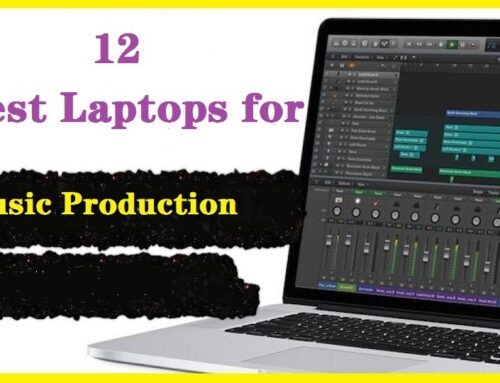

Thanks. You are the only one who understands and addresses the needs of professional programmers.